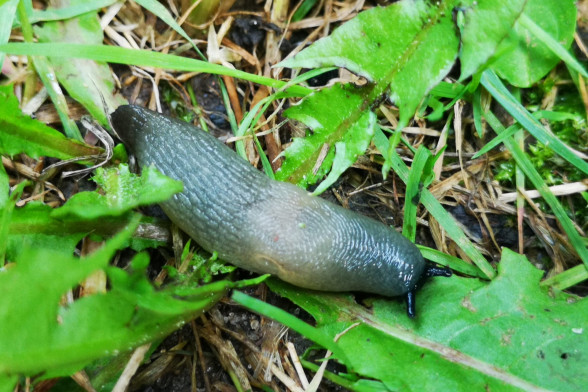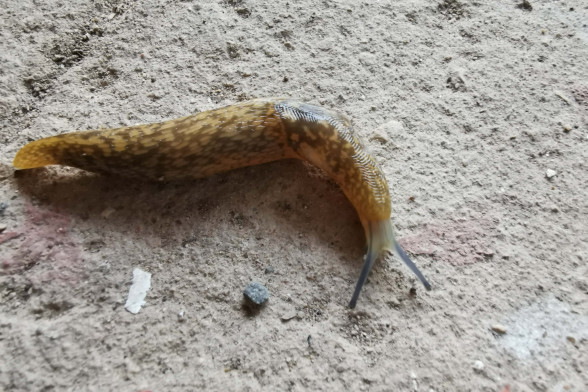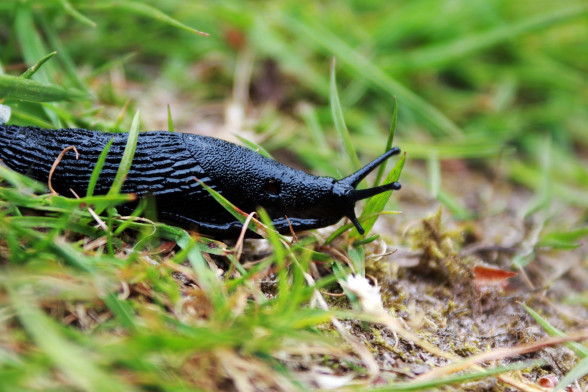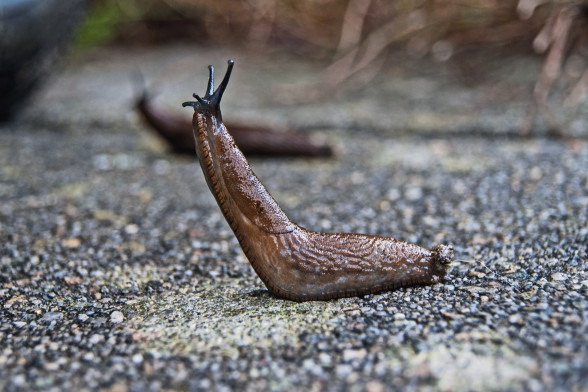
Round back slugs
Habitat
Very diverse: forests, meadows, gardens, hedges, dunes. 20 species belonging to three families have been recorded in Latvia. Seven of them are non-native and occur in areas associated with human activity. Two of the imported species are found only in greenhouses and plant houses and cannot survive outside (our winters are too cold for southern species).
Diet
Most slugs are omnivores – they eat all organic food, including plant leaves, moss on trees, mushrooms, etc. Some slugs are carnivores – they eat other slugs and earthworms or their remains.
Important and interesting facts
Slugs are snails that have completely “lost” their shells through evolution; they have no externally visible shell. Why did this happen? There are various hypotheses: for example, it is possible that these molluscs once started living in aquatic environment, where the shell would only trouble. A second hypothesis is that it was due to a lack of calcium in the soil. As a result, the slugs are not protected from enemies and from dry weather.
The slugs has quite a few enemies. Hedgehogs, moles and shrews like to eat them. Birds include starlings, rooks, jackdaws, chickens and ducks. Slugs also form part of the diet of many frogs, toads, lizards and snakes. They are even eaten by some invertebrates, such as grasshoppers. Slugs cause a lot of damage in gardens: they eat potato leaves and tubers, cabbage and cauliflower leaves, bean and pea leaves, winter wheat and rye grains and sprouts. They also spread various plant diseases.
In recent years, the Spanish slug has been spreading in south-western Latvia, causing localised damage to gardens.
Information sources: redzet.eu, latvijasdaba.lv, Wikipedia
Photos: redzet.eu, pixabay.com



